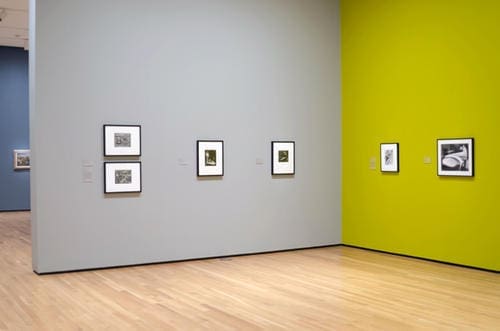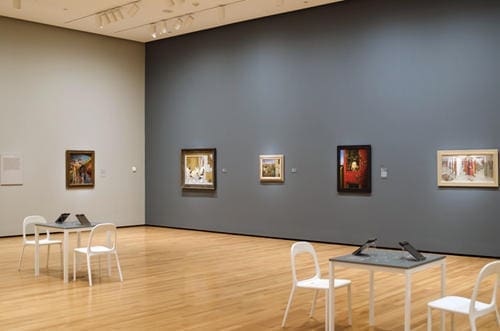Real/Surreal
Karl and Bertl Arnstein Galleries
July 20, 2013 - November 3, 2013
"While the obvious point of the Akron Art Museum’s new exhibit, Real/Surreal, is how the realist painting style can often cross the line into surrealism, there’s another, subtler, even more rewarding aspect to the exhibit that can only be appreciated in person.
That would be the juxtaposition of exactitude and impossibility, or more explicitly, the strange beauty of precision, no matter what the meaning. That there can be beauty with unexpected meaning, or even more strangely, beauty without meaning, is an unexpected revelation of this show."
-Dorothy Shinn, Akron Beacon Journal
During the years leading up to and following World War II, many American artists worked in styles that merged influences from European Surrealism with native realist traditions. On the face of it, Surrealists, who explored the subconscious in search of higher realities, and realist artists, who rely on motifs drawn from the observable world, may appear to pursue conflicting styles. However, a number of artists practicing during this tumultuous period married aspects of both approaches to create timely and compelling images.
Featuring more than 60 paintings, drawings, prints and photographs dating from 1930 to 1955 drawn from the collection of the Whitney Museum of American Art, Real/Surreal examines how American artists used strikingly naturalistic details to imaginative images inspired by dreams and how they introduced disconcerting undertones into compositions that featured seemingly ordinary scenes. The exhibition features works by both well-known artists, such as Charles Burchfield, Edward Hopper, Charles Sheeler and Grant Wood alongside engaging images by lesser-known talents, among them Francis Criss, Louis Gugliemi and Katherine Schmidt.
Real/Surreal offers viewers a journey though other realms, be it George Tooker’s eerie subway station or Man Ray’s pool table careening into space under pastel clouds. And often even ostensibly straightforward scenes, such as Edward Hopper’s Cape Cod Sunset, have a disturbing quality, here conveyed by the half-drawn blinds and untrimmed grass suggesting a house that has long been abandoned. The exhibition also offers insights into the challenges Americans faced during this critical era, including the ravages of the Dust Bowl depicted by Joe Jones in American Farm and the promises and threats of technology referenced by Peter Blume in Light of the World.
First presented as an exhibition drawn from the permanent collection at the Whitney Museum of American Art in New York in 2010, Real/Surreal was greeted with critical praise that inspired its tour to five additional museums nationwide.
This exhibition was organized by the Whitney Museum of American Art, New York.
The Akron presentation has been made possible by major grants from the John S. and James L. Knight Foundation and Henry Luce Foundation with additional support from the Lehner Family Foundation, Margaret Clark Morgan Foundation, Corbin Foundation, Ohio Arts Council and Harris-Stanton Gallery.




